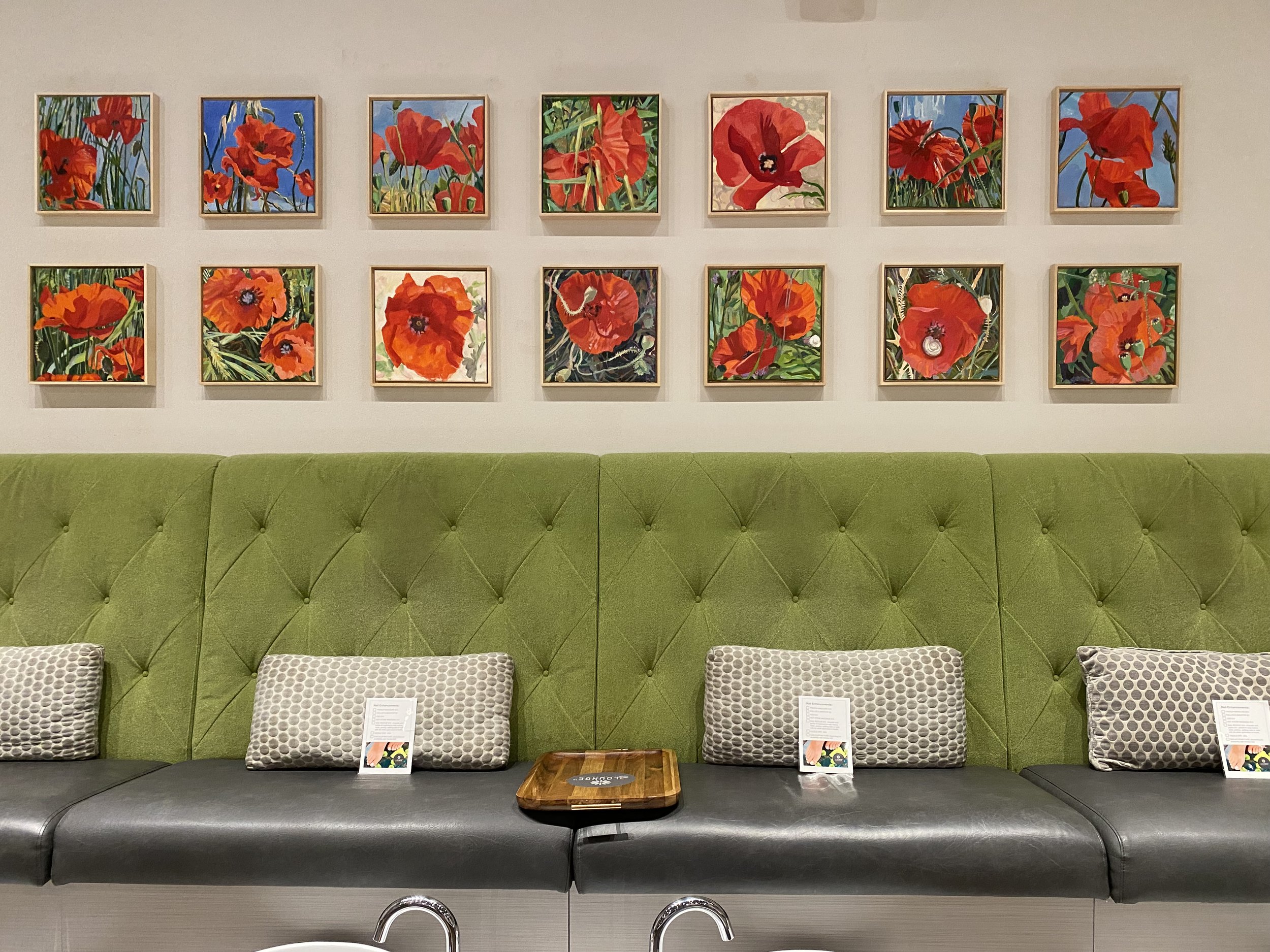Two days into my time at an artist residency in Maussane-les-Alpilles, France, …I fell for the poppies. They hover and float with a cheerful red glow along roadsides. They fill fields. Remarkably resilient, they reappear after a heavy rain or an aggressive mow, enlivening abandoned orchards as well as freshly planted ones. Whether adorning driveways or well-tended gardens, they take center stage with that brilliant red flash that leans cool or warm depending on how they glance at the sun. They peek out from behind rubble in a field. Up close they appear both fragile and steely with their delicate petals and curving stems. Crouching, closing in the cold morning dew, they expand full-petal to greet the sun. They flap wildly in the mistral wind but cling on in a tight, survivor-mode to their quirky curving stems. And though they appear as light as a feather, they house snails.
I began to think about the painters that have turned to poppies as a subject and recalled the Van Goghs, Monets, Renoirs… some of which were painted not far from NG Creative Artist Residency in Maussane. And I thought about Georgia O’Keefe and Anselm Kiefer. I remember seeing Kiefer’s immense painting of the war-torn or scorched field in ominous greys and blacks…with the hopeful dashes of what I red as pink and red poppies. Here in Maussane, where the ancient olive orchards sit nine feet above the road, the roadside poppies stack in a tapestry of dust, weeds and poppies with some at eye level, some at your ankles, some overhead against the periwinkle blue sky. I thought about Georgia O’Keefe’s invitation for us to look more closely at a flower: “Nobody sees a flower - really - it is so small it takes time - we haven't time - and to see takes time, like to have a friend takes time. I have already settled it for myself so flattery and criticism go down the same drain and I am quite free.” Inspired by her “why not” bravery, I set out on my poppy painting freedom.
My routine was to walk, draw, take photos. The 12 x 12 oil on canvas works are mostly based on photos I took on my daily walks. Van Gogh noted that he discovered painting flowers was a way for him to make new discoveries in color harmonies. I discovered the same, investigating the color red and its behavior on a new level. I painted the same sized canvas daily and the experience was completely different each time as I began to notice how vastly different each flower was.
As my wall filled with poppy paintings the collection morphed into one work. I decided to install the paintings side by side to enhance the push /pull of similarity and difference…and I kept extending the set as a way to mimick the height and breadth of a roadside bank in Maussane.
Poppies have symbolized death, rebirth, sleep, peace/war and reincarnation since Roman times. They have taken on a special role of mourning and remembrance in some countries after the publication of In Flanders Fields by John McCrea after World War one. In my research, I learned that the color red is sometimes made from the blood of a beetle harvested in fields of cactus – a sacrifice of cactus, to beetle that can go very wrong for one of the two when the harvesting is not managed precisely. Poppies offer a breathtaking dance between fragility and resilience, captured so beautifully by Mary Oliver:.
Poppies
Mary Oliver
The poppies send up their
orange flares; swaying
in the wind, their congregations
are a levitation
of bright dust, of thin
and lacy leaves.
There isn’t a place
in this world that doesn’t
sooner or later drown
in the indigos of darkness,
but now, for a while,
the roughage
shines like a miracle
as it floats above everything
with its yellow hair.
Of course nothing stops the cold,
black, curved blade
from hooking forward—
of course
loss is the great lesson.
But I also say this: that light
is an invitation
to happiness,
and that happiness,
when it’s done right,
is a kind of holiness,
palpable and redemptive.
Inside the bright fields,
touched by their rough and spongy gold,
I am washed and washed
in the river
of earthly delight—
and what are you going to do—
what can you do
about it—
deep, blue night?
